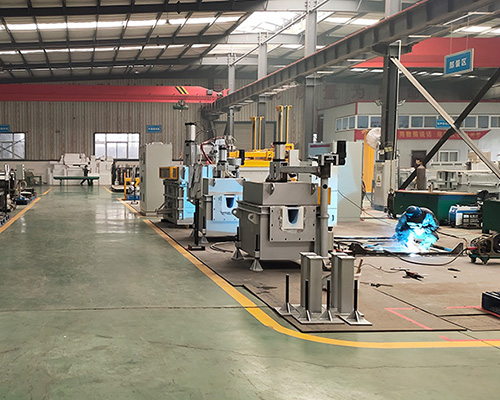The plate type filtering device is used to filter non-metallic inclusions in the molten aluminum, matching with the ceramic foam filter. It can filter the slag inclusions and tiny particles in the molten aluminum. Especially suit for the casting high purity aluminum and high precision aluminum alloy. It has the advantages of thermal resistance, anti-oxidation, corrosion resistance, warming up quickly, long lifetime, and acid resistance.
The slag mixed into the ingot or other non-metallic impurities falling into the ingot are called non-metallic inclusions. Its fracture features are black strips and flakes, and the microstructure features are mostly black linear, massive, and flocculent disordered tissues, with an obvious color difference from the matrix. Non-metallic inclusions are an important cause of delamination and surface defects in aluminum processed products. In the heat treatment and heating process, the presence of non-metallic inclusions can promote the formation of secondary porosity and bubbles. In terms of mechanical properties, non-metallic inclusions are places where stress is concentrated, which reduces the strength limit and elongation of the alloy. In particular, the reduction in transverse elongation and dynamic mechanical properties (impact toughness, fatigue strength and fracture toughness) is more serious. In addition, non-metallic inclusions will also reduce the stress corrosion resistance of the alloy.
Non-metallic inclusions (slag inclusions) can usually be found when inspecting the transverse low-magnification test piece of the ingot. Slag inclusions are not allowed in Class A cast rods. For ingots of Class B and Class C <550mm, there should be no more than two slag inclusions, and the single area is less than 0.5mm^2, otherwise, it will be “scrap”. Non-metallic inclusions are the most frequent defect in aluminum alloy ingots. According to statistics, calculated by quality, ingots scrapped due to slag inclusion account for about 10%-25% of the total waste.

Slag inclusions are usually caused by slag, lining fragments, and large lumpy oxides that fall into the ingot along with the liquid metal during the casting process.
The way to prevent slag inclusion is:
- Refining carefully, ensuring the standing time, and filtering with plate type filtering device.
- Shorten the transfer distance as much as possible, establish good transfer conditions, close all the exposed drops in the launder, distribution plate, and funnel to prevent fluctuations in the metal liquid level. It is best to use the same level of casting under possible conditions.
- Bake the transfer tools thoroughly, increase the casting temperature appropriately, slag carefully during the casting process, and carefully clean the furnace, flow plate and other tools after casting.
- Use clean charge.

